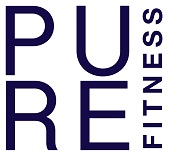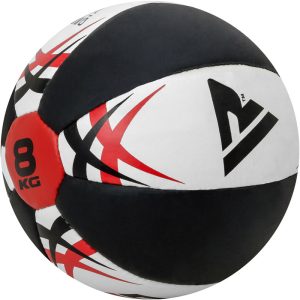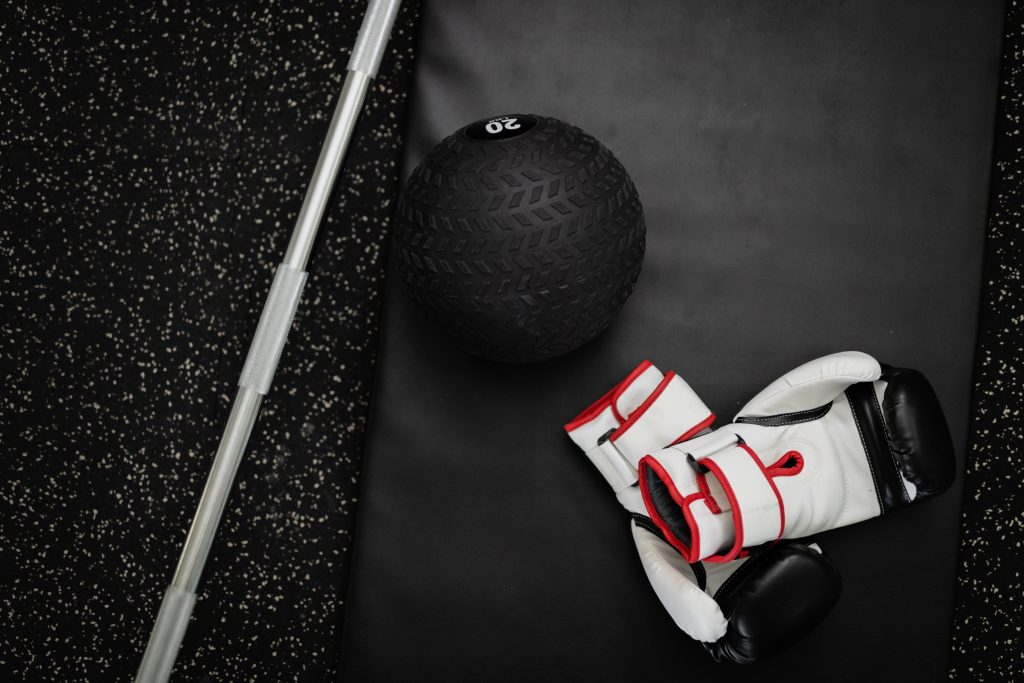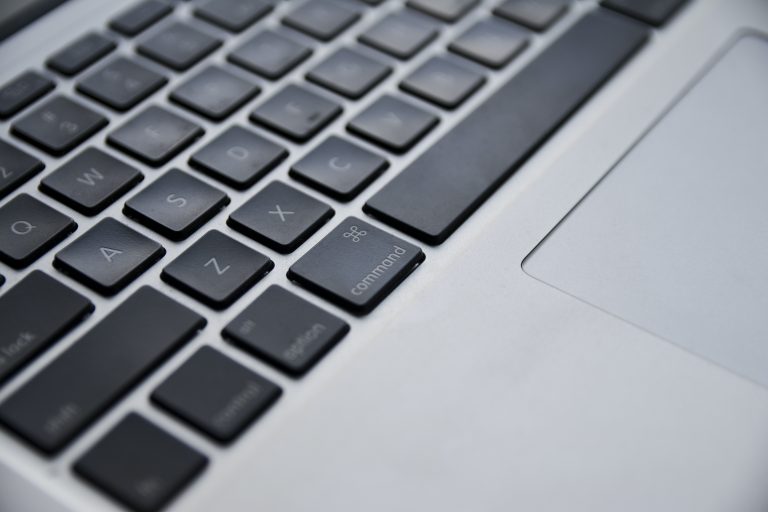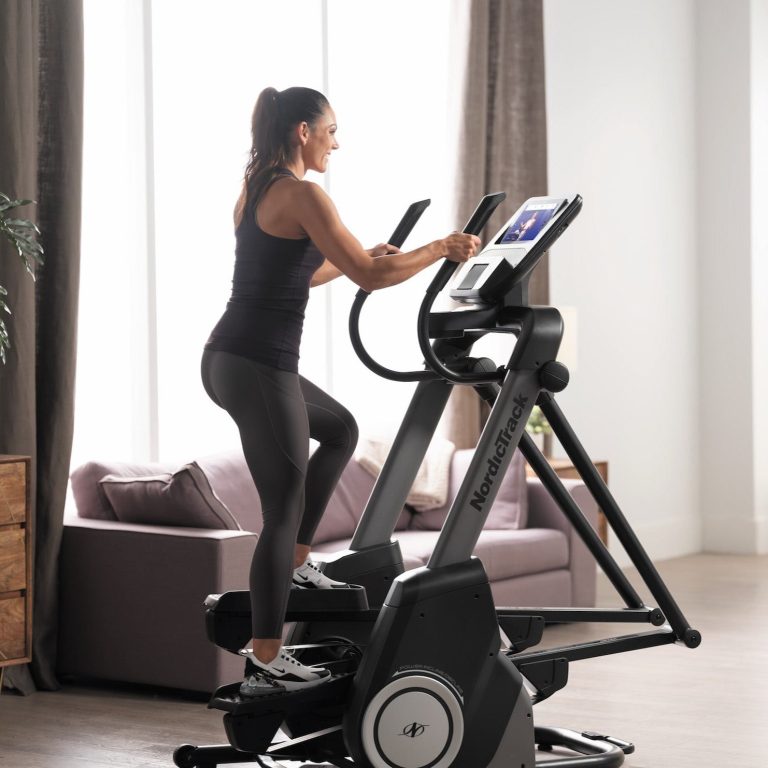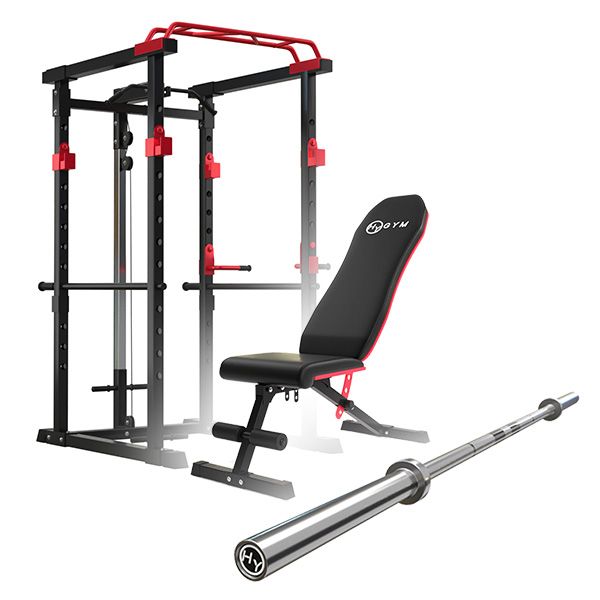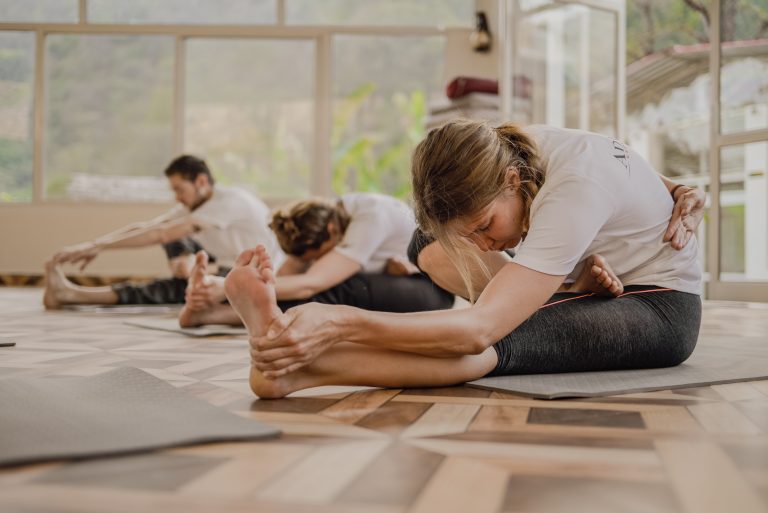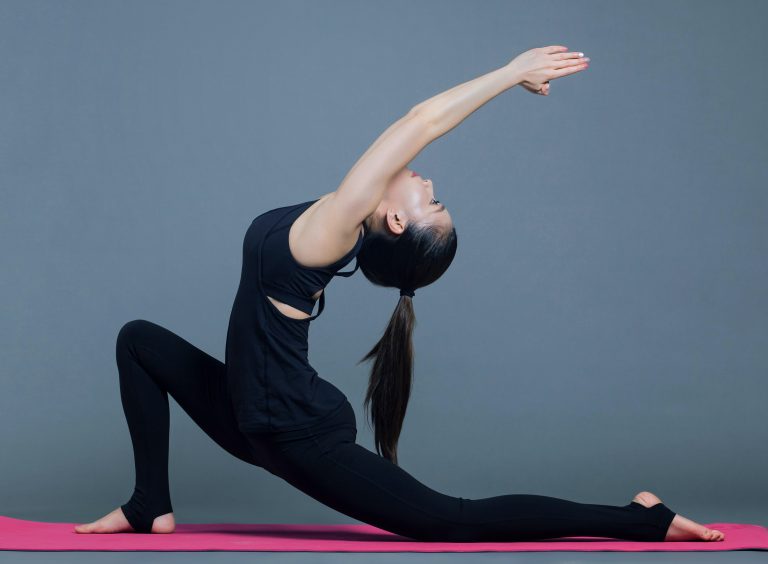Imagine yourself in a fitness training session, surrounded by an array of equipment designed to help you achieve your fitness goals. Amidst the dumbbells, resistance bands, and treadmills, one particular item catches your eye – the medicine ball. But what exactly is a medicine ball used for in fitness training? This versatile tool is not just a decorative element in the gym; it is a powerful aid that can enhance your workout routine, targeting various muscle groups and improving your strength, flexibility, and coordination. Whether you’re a beginner or a seasoned fitness enthusiast, understanding the many uses of a medicine ball can revolutionize the way you approach your fitness journey. A medicine ball is a versatile piece of equipment that can greatly enhance your fitness training. Whether you’re a beginner or an experienced athlete, incorporating a medicine ball into your routine can provide numerous benefits. From improving core strength to increasing power and explosiveness, the medicine ball is an effective tool for achieving your fitness goals. In this article, we will explore the various benefits of using a medicine ball, different types of exercises you can perform, workout routines, how to choose the right medicine ball, safety precautions, and additional uses for this fantastic piece of equipment.
Table of Contents
ToggleBenefits of Using a Medicine Ball
Improves Core Strength
One of the primary benefits of using a medicine ball is its ability to improve core strength. When you engage in exercises that involve twisting, rotating, throwing, or slamming the medicine ball, you activate muscles throughout your core, including the abs, obliques, and lower back. As you perform these movements, your core muscles contract to help stabilize your body and provide power. By regularly incorporating medicine ball exercises into your routine, you can strengthen your core muscles, leading to improved stability, posture, and overall strength.
Increases Power and Explosiveness
Another significant benefit of using a medicine ball is that it can help increase power and explosiveness. Many medicine ball exercises involve explosive movements, such as throws and slams, that require you to generate force quickly. By regularly performing these exercises, you can train your body to produce power more efficiently, which can be beneficial for sports that require explosive movements, such as basketball, tennis, or golf. Increased power and explosiveness can also enhance your performance in other activities, such as weightlifting or sprinting.
Enhances Flexibility
Using a medicine ball can also enhance your flexibility. Many exercises with the medicine ball involve stretch-like movements that require you to reach, twist, or extend your muscles. Performing these exercises regularly can help increase your range of motion and improve your flexibility over time. Improved flexibility not only allows you to move more freely but also reduces the risk of injury during workouts or daily activities.
Improves Coordination and Balance
Medicine ball exercises require coordination and balance, making them excellent for improving these two skills. When you perform exercises like Russian twists or overhead throws, you engage your entire body, forcing your muscles to work together in a coordinated manner. This helps improve your overall body control and balance, which can be beneficial for various sports and day-to-day activities. Regularly including medicine ball exercises in your routine can help enhance your coordination and balance, leading to improved athletic performance and overall physical abilities.
Promotes Functional Training
Lastly, using a medicine ball promotes functional training. Functional training focuses on exercises that mimic the movements and demands of daily activities or sports-specific movements. Because medicine ball exercises involve full-body motions, they closely mimic real-life movements and engage multiple muscle groups simultaneously. By incorporating medicine ball exercises into your fitness routine, you can improve your functional strength, making your body more capable and efficient in performing everyday tasks or sports-specific activities with ease.
Types of Exercises with Medicine Ball
Now that we’ve discussed the benefits of using a medicine ball, let’s explore some of the different exercises you can perform with this versatile piece of equipment.
Medicine Ball Slams
Medicine ball slams are a fantastic way to build explosive power and engage your entire body. To perform a medicine ball slam, start by standing with your feet shoulder-width apart, holding the medicine ball above your head. Then, with force, throw the ball down to the ground while simultaneously squatting down and catching the ball on the bounce. Repeat this movement for the desired number of repetitions. Medicine ball slams primarily target the core, shoulders, and legs, making them a great full-body exercise.
Russian Twists
Russian twists are excellent for working the obliques and improving rotational strength. To perform this exercise, start by sitting on the ground with your knees bent and feet flat on the floor. Hold the medicine ball with both hands in front of your chest. Lean back slightly while keeping your back straight and lift your feet off the ground, balancing on your glutes. From here, twist your upper body to the right while bringing the medicine ball to the right side of your body. Return to the center and then twist to the left. Repeat this movement for the desired number of repetitions.
Wall Throws
Wall throws are a great exercise for developing power and explosiveness in the upper body. Stand facing a wall with your feet shoulder-width apart, holding the medicine ball at chest level. From here, explosively throw the ball against the wall while extending your arms fully. Catch the ball on the rebound and repeat the movement for the desired number of repetitions. Wall throws target the chest, shoulders, and triceps, making them a fantastic exercise for building upper body strength.
Overhead Throws
Overhead throws are another powerful exercise that engages the entire body, with a particular emphasis on the shoulders and core. Begin by standing with your feet shoulder-width apart, holding the medicine ball with both hands at chest level. Lift the ball above your head, extending your arms fully. From here, throw the ball forward and upward as explosively as possible. Catch the ball on the bounce and repeat the movement for the desired number of repetitions. Overhead throws are excellent for developing power and explosiveness.
Medicine Ball Push-ups
Medicine ball push-ups are a challenging variation of the classic push-up that targets the chest, shoulders, and triceps while also engaging the core. To perform this exercise, start in a high plank position with your hands resting on the medicine ball instead of the floor. Lower your body down while keeping your core engaged and your elbows close to your sides. Push back up to the starting position and repeat for the desired number of repetitions. This exercise adds an element of instability, requiring your muscles to work harder to stabilize your body.
These are just a few examples of exercises you can perform with a medicine ball. The possibilities are endless, and you can get creative with different combinations and variations to suit your fitness goals and preferences.
Medicine Ball Workouts for Different Body Parts
Aside from individual exercises, you can also structure your workout routines to target specific body parts. Here are some examples of medicine ball workouts for different areas of your body:
Upper Body Workouts
For an upper body-focused workout, you can incorporate exercises like medicine ball push-ups, wall throws, and overhead throws. These exercises target the chest, shoulders, triceps, and upper back, helping you build strength and power in your upper body muscles.
Lower Body Workouts
To target your lower body muscles, you can include exercises like medicine ball squats, lunges with a twist, and lateral slams. These exercises engage the glutes, quadriceps, hamstrings, and calves, helping you build strength and stability in your lower body.
Core Workouts
If you want to focus on strengthening your core, exercises like Russian twists, medicine ball sit-ups, and plank exercises with the ball can be effective. These exercises engage the abs, obliques, and lower back, helping you develop a strong and stable core.
By incorporating these workouts into your fitness routine, you can ensure that you are targeting specific areas of your body for optimal strength and development.
Medicine Ball Workout Routines
In addition to targeting specific body parts, you can also structure your workout routines using a medicine ball in different ways. Some popular options include:
Full Body Circuit
A full-body circuit involves performing a series of exercises back-to-back with little to no rest in between. You can create a circuit using a variety of medicine ball exercises, such as slams, twists, throws, and push-ups. Perform each exercise for a certain number of repetitions or time duration before moving on to the next exercise. Repeat the circuit for multiple rounds, resting for a short period between rounds if needed. This type of workout helps improve overall strength and conditioning while keeping your heart rate elevated.
Superset Workouts
Superset workouts involve performing two different exercises back-to-back without rest in between. By pairing complementary exercises, you can effectively target specific muscle groups while challenging your cardiovascular system. For example, you can pair medicine ball squats with overhead throws, alternating between the two exercises for a certain number of repetitions. Rest for a short period after completing both exercises and then repeat for multiple rounds. Supersets are a great way to add intensity to your workouts and maximize your time in the gym.
Tabata Workouts
Tabata workouts are a high-intensity interval training (HIIT) method that involves short bursts of intense exercise followed by brief rest periods. With a medicine ball, you can create a Tabata-style workout by selecting a few exercises and performing each exercise for 20 seconds at maximum effort, followed by 10 seconds of rest. Repeat this cycle for multiple rounds, aiming for four minutes in total for each exercise. Tabata workouts are a time-efficient way to improve cardiovascular fitness, burn calories, and boost your metabolism.
By incorporating these different workout routines into your fitness training, you can keep your workouts varied, challenging, and engaging, leading to better results and continued progress.
Choosing the Right Medicine Ball
When selecting a medicine ball, there are a few factors to consider to ensure you choose the right one for your needs. These factors include:
Consider the Weight
Medicine balls come in a variety of weights, ranging from a few pounds to over 50 pounds. When choosing a medicine ball, consider your current strength and fitness level. If you’re a beginner, start with a lighter weight and gradually increase as you get stronger. For more advanced individuals, a heavier medicine ball may be appropriate. It’s essential to choose a weight that challenges you without sacrificing proper form and technique.
Consider the Material
Medicine balls are available in different materials, including leather, rubber, and synthetic. Each material has its advantages and disadvantages. Leather medicine balls provide a classic look and feel but may be more expensive and less durable. Rubber medicine balls are more durable and often preferred for slamming exercises. Synthetic medicine balls are generally more affordable and can withstand heavy use. Consider your specific needs and preferences when selecting the material of your medicine ball.
Consider the Grip
The grip of a medicine ball is another important factor to consider. Some medicine balls have smooth surfaces, while others have textured or grippy exteriors. Depending on the exercises you plan to perform, you may prefer a ball with a firm grip to prevent slipping. Consider the type of grip you find most comfortable and secure when selecting your medicine ball.
Taking these factors into account will help you choose the right medicine ball that suits your fitness level, preferences, and goals.
Safety Precautions with Medicine Ball
While using a medicine ball can be a safe and effective way to enhance your fitness training, it’s essential to follow some safety precautions to prevent injury. Here are a few guidelines to keep in mind:
Select an Appropriate Weight
Choosing the right weight for your medicine ball is crucial to ensure you can perform exercises with proper form and control. Using a ball that is too heavy for your current strength level can increase the risk of strain or injury. Start with a lighter weight and gradually progress as you become more comfortable and stronger.
Maintain Proper Form
Maintaining proper form is essential when performing medicine ball exercises. Poor form increases the risk of injury and minimizes the effectiveness of the exercise. Take your time to learn proper technique for each exercise and focus on executing movements correctly. Engage your core, maintain a stable posture, and use smooth, controlled motions throughout the exercises.
Use a Suitable Training Surface
When performing exercises that involve throwing or slamming the medicine ball, ensure that you have a suitable training surface. Ideally, use a non-slip, shock-absorbing surface, such as a rubber mat or grass. Avoid hard surfaces like concrete or tiled floors, as they can increase the risk of impact-related injuries or damage to the ball.
By following these safety precautions, you can reduce the risk of injury and safely enjoy the benefits of using a medicine ball in your fitness training.
Benefits of Adding Medicine Ball to Your Fitness Routine
Now that we have explored the various exercises, workout routines, and safety precautions associated with using a medicine ball, let’s delve into the overall benefits of adding this versatile tool to your fitness routine.
Versatility
One of the biggest advantages of using a medicine ball is its versatility. Whether you’re aiming to improve strength, power, flexibility, or coordination, the medicine ball allows you to perform a wide range of exercises that target different muscle groups. From explosive throws to core-strengthening twists, the medicine ball offers endless possibilities for challenging and effective workouts.
Engages Multiple Muscle Groups
Using a medicine ball activates multiple muscle groups simultaneously, offering a full-body workout experience. Many exercises require you to engage your core for stability while also targeting the upper and lower body muscles. This efficient and holistic approach to training not only saves time but also promotes balanced muscle development and functional strength.
Suitable for All Fitness Levels
One of the best aspects of using a medicine ball is that it is suitable for people of all fitness levels. Whether you’re a beginner or an advanced athlete, the intensity of medicine ball exercises can be adjusted to match your current abilities. By choosing the right weight and modifying the exercises as needed, the medicine ball can be incorporated into any fitness routine to help you progress and reach your fitness goals.
By adding a medicine ball to your fitness routine, you can reap these benefits and enjoy a versatile, engaging, and effective training experience.
Incorporating Medicine Ball into Different Training Modalities
In addition to its standalone benefits, the medicine ball can also be incorporated into different training modalities to enhance their effectiveness. Here are a few examples of how you can use a medicine ball in conjunction with other training methods:
Strength Training
By incorporating a medicine ball into your strength training routine, you can add an extra challenge to traditional exercises. For example, holding a medicine ball during squats or lunges can increase the resistance and engage more muscles. You can also use the medicine ball for weighted exercises such as chest presses or shoulder presses, providing a dynamic alternative to dumbbells or barbells.
Functional Training
Functional training focuses on exercises that replicate real-life movements and improve your ability to perform daily activities or sports-specific skills. The medicine ball’s unique weight and shape make it an excellent tool for functional training. Incorporate medicine ball exercises that mimic movements you perform in your chosen sport or activities to improve your overall functional strength and movement patterns.
HIIT Workouts
High-intensity interval training (HIIT) workouts involve short bursts of intense exercise followed by brief rest periods. Adding a medicine ball to your HIIT workouts can boost the intensity and effectiveness of the exercises. For example, you can perform medicine ball slams, wall throws, or overhead throws during the high-intensity periods to increase the challenge and elevate your heart rate. This combination of cardiovascular and strength elements is ideal for maximizing calorie burn and improving overall fitness.
By incorporating the medicine ball into different training modalities, you can diversify your workouts, challenge your body in new ways, and optimize your training outcomes.
Top Medicine Ball Exercises for Sports-specific Training
In addition to the general benefits and exercises we have discussed, the medicine ball can also be used for sports-specific training. Here are a few examples of how the medicine ball can be integrated into training for specific sports:
Medicine Ball Squat Throws for Basketball
Basketball players can benefit from explosive lower body power and improved upper body strength. Medicine ball squat throws are an excellent exercise for developing these attributes. Start by standing with your feet shoulder-width apart, holding the medicine ball at your chest. Perform a squat, and as you come up, explode upwards while throwing the ball as high as possible. This exercise mimics the explosive movements involved in jumping and shooting, making it an ideal training tool for basketball players.
Medicine Ball Rotational Tosses for Golf
Golf requires rotational power and stability. Medicine ball rotational tosses help develop these qualities. Stand with your feet shoulder-width apart, holding the medicine ball in front of you. Rotate your upper body to the right, pivoting on your back foot while transferring your weight to the front foot. At the end of the rotation, explosively throw the ball to the right. Repeat the movement, rotating to the left. This exercise mimics the rotational movements involved in a golf swing, helping golfers develop power and stability.
Medicine Ball Slams for Tennis Players
Tennis players can benefit from improved power, explosiveness, and core stability. Medicine ball slams are a great exercise for achieving these goals. Start by standing with your feet shoulder-width apart, holding the medicine ball above your head. Slam the ball down as hard as you can while simultaneously squatting down and catching the ball on the bounce. This exercise targets the core, shoulders, and legs, helping tennis players improve their overall power and stability during explosive movements on the court.
By incorporating sport-specific medicine ball exercises into your training routine, you can enhance your performance and improve the specific skills required for your chosen sport.
Additional Uses for Medicine Ball
Apart from its benefits in general fitness and sports-specific training, the medicine ball can also be utilized in other contexts, such as physical therapy, rehabilitation exercises, and balance training.
Physical Therapy
The medicine ball is often incorporated into physical therapy programs to help individuals recover from injuries or improve their range of motion, strength, and stability. The ball’s weight and versatility allow for controlled and progressive exercises that can target specific areas of the body while reducing the risk of further injury.
Rehabilitation Exercises
Similar to physical therapy, rehabilitation exercises often utilize the medicine ball to aid in the recovery process following surgery or injury. By engaging multiple muscle groups and promoting functional movements, the medicine ball can help restore strength, flexibility, and coordination during the rehabilitation process.
Balance Training
The medicine ball can be utilized for balance training exercises, which help improve stability and proprioception. By incorporating movements such as standing on one leg and passing the medicine ball from hand to hand, you can challenge your balance and engage the stabilizing muscles throughout your body.
Whether you’re looking to recover from an injury, enhance your balance, or participate in rehabilitation exercises, the medicine ball can serve as a valuable tool in these contexts.
In conclusion, adding a medicine ball to your fitness routine can provide numerous benefits, including improved core strength, increased power and explosiveness, enhanced flexibility, improved coordination and balance, and the promotion of functional training. With a wide variety of exercises and workout routines available, you can target different body parts, engage multiple muscle groups, and cater to your specific fitness goals. By choosing the right medicine ball, following safety precautions, and incorporating it into different training modalities, you can maximize the effectiveness of your workouts. Whether you’re a beginner or an experienced athlete, the medicine ball is a versatile and valuable tool that can elevate your fitness training to new heights. So, grab a medicine ball and start reaping the many benefits it has to offer!
